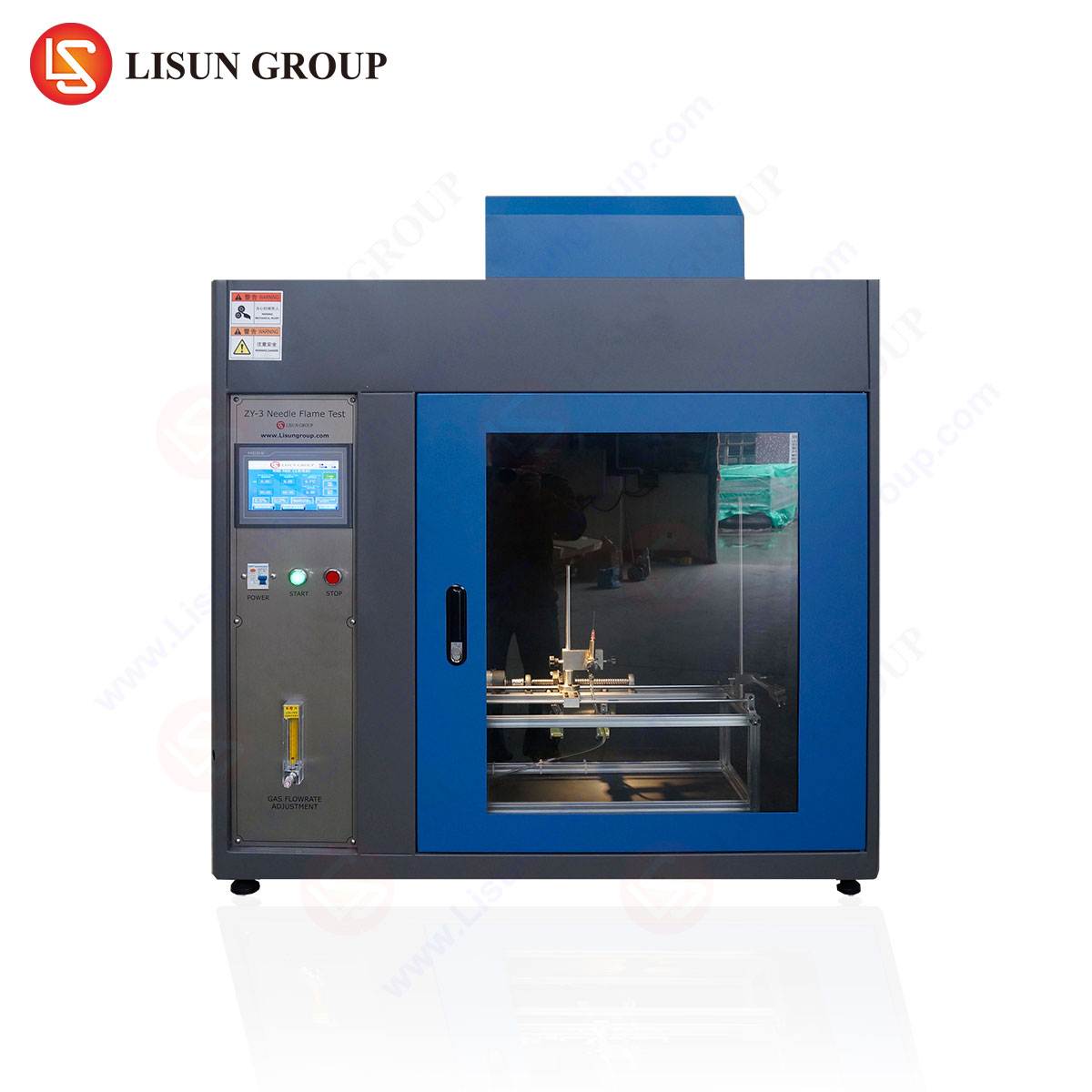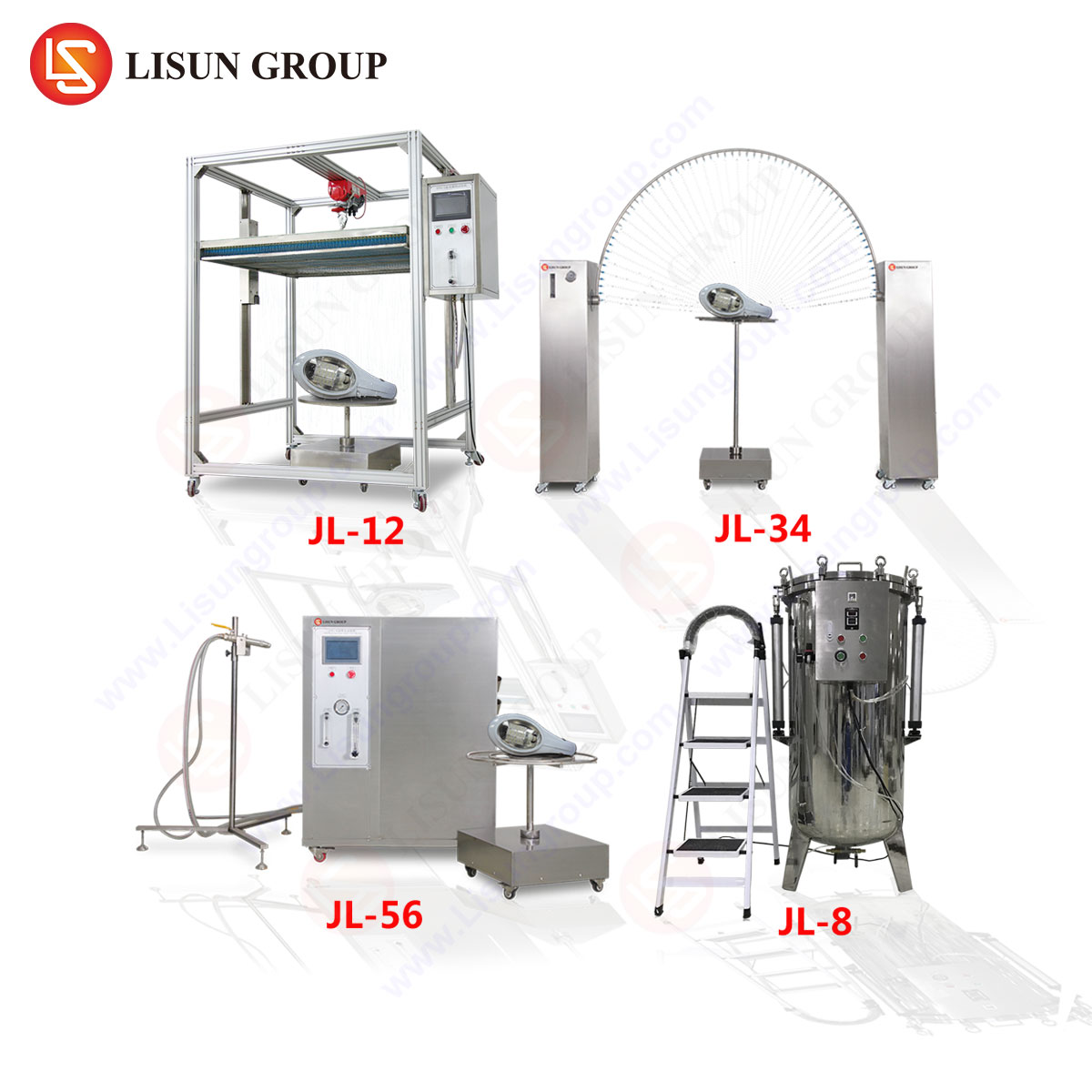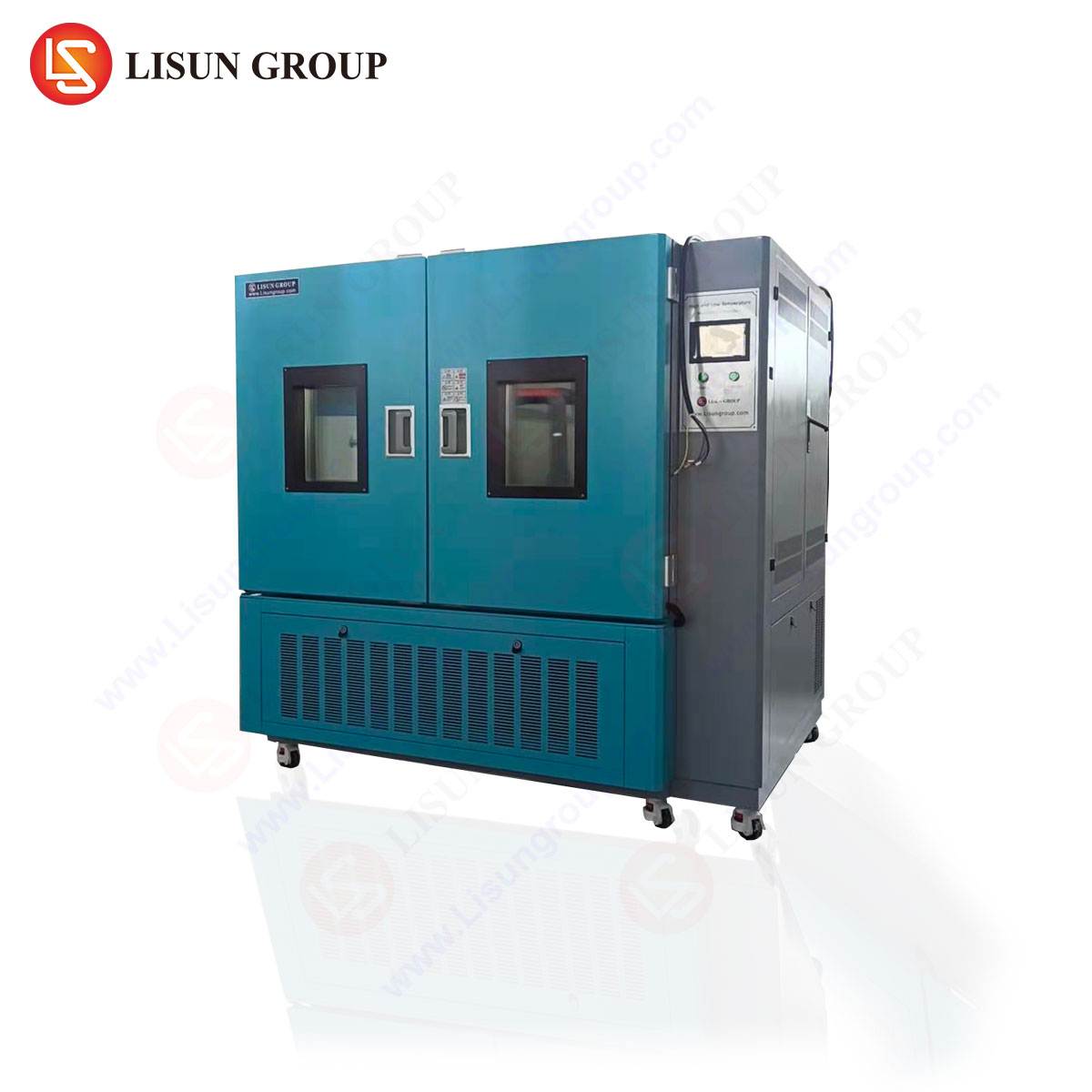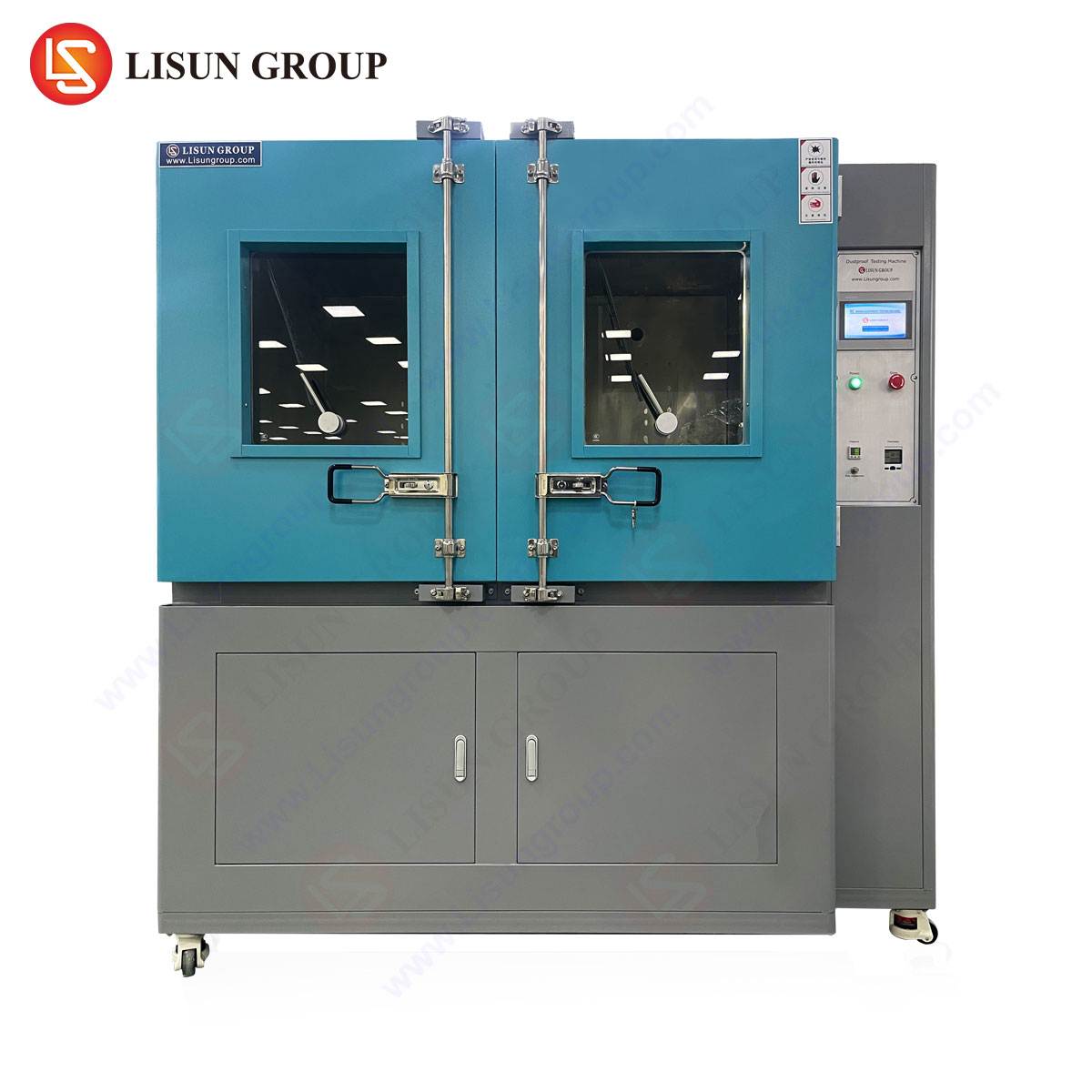The Role of Horizontal Needle Flame Testing in Product Safety Validation
The imperative to ensure the fire safety of materials and components is a non-negotiable aspect of product design and manufacturing across a multitude of industries. The potential for ignition from small sources, such as overheated electrical components, faulty connections, or malfunctioning circuits, necessitates rigorous testing protocols. Among these, the needle flame test stands as a critical assessment, designed to simulate the effect of a small flame that may result from fault conditions within equipment. The Horizontal Needle Flame Test Machine is the specialized apparatus engineered to conduct this evaluation with precision and repeatability, providing invaluable data on the flammability and flame-spreading tendencies of non-metallic materials.
This test methodology is not merely a quality check but a fundamental component of a comprehensive safety engineering strategy. It is intrinsically linked to international safety standards, which serve as the benchmark for product acceptance in global markets. Compliance with these standards mitigates the risk of fire-related incidents, protecting end-users and safeguarding manufacturers from liability. The apparatus’s design, which orients the test flame horizontally to impinge upon a vertically mounted specimen, creates a highly controlled and reproducible scenario for assessing a material’s resistance to ignition and its ability to self-extinguish once the ignition source is removed.
Fundamental Principles of the Needle Flame Test
The operational premise of the Horizontal Needle Flame Test is defined by its ability to generate and apply a consistent, calibrated small flame to a test specimen. The test flame itself is produced by supplying a specific fuel mixture, typically 99% purity methane or propane gas, at a controlled flow rate to a burner nozzle with a nominal diameter of 0.5 mm. This configuration yields a flame with a nominal power output of 50 W, though calibration to a precise height and temperature profile is mandatory prior to any testing sequence.
The specimen is mounted vertically on a standardized support, and the burner is positioned such that the flame is applied horizontally to the bottom edge of the sample or to a predetermined point of weakness, such as a seam or opening. The duration of flame application is strictly controlled, typically for periods of 5, 10, 15, 30, or 60 seconds, as stipulated by the relevant product standard. Following the application period, the burner is retracted, and the subsequent behavior of the specimen is meticulously observed and recorded.
Key parameters assessed include the duration of after-flame and after-glow times, the extent of material consumed by the flame, and whether any burning particles fall from the specimen and ignite a layer of surgical cotton positioned below. The pass/fail criteria are explicitly detailed within the applicable standards (e.g., IEC 60695-11-5), often focusing on limiting after-flame times, preventing the spread of flame beyond designated boundaries, and ensuring that ignited droplets do not propagate fire to the surrounding environment.
Technical Specifications of the LISUN ZY-3 Needle Flame Test Apparatus
The LISUN ZY-3 Needle Flame Test Apparatus embodies the technical requirements for conducting these assessments in accordance with major international standards, including IEC 60695-11-5, GB/T 5169.5, and ISO 9772. Its design integrates precision engineering with user-centric features to ensure reliable and compliant testing outcomes.
Core Specifications:
- Burner Nozzle: Constructed from stainless steel with an internal diameter of 0.5 ± 0.1 mm and a length of 35 ± 1 mm.
- Flame Adjustment: Precise control of the gas flow rate to calibrate the flame height to 12 ± 1 mm, verified using a proprietary gauge block.
- Flame Application Time: Programmable timer with a range of 0 to 999.9 seconds, offering accuracy to ±0.1 seconds, allowing for the exacting requirements of various test protocols.
- Positioning System: A high-precision sliding platform and specimen clamp allow for three-dimensional adjustment of the burner’s position relative to the specimen. This ensures accurate and repeatable flame impingement at the exact location specified by the standard.
- Safety Enclosure: A transparent, draft-proof test chamber constructed from reinforced glass or high-temperature-resistant polymer. This chamber contains the test and protects the operator from potential flare-ups, while also preventing external air currents from influencing the flame and compromising results.
- Gas Supply: Integrated pressure regulation and flow metering for consistent fuel delivery. The apparatus is configured for use with methane (99% purity) as the primary reference gas, though it can be calibrated for propane.
- Calibration Thermocouple: Includes a dedicated 0.5mm diameter K-type thermocouple for verifying the flame temperature. The temperature must reach 1000 ± 50°C at a defined point when measured with the supplied thermocouple.
Applications Across Critical Industries
The data generated by the LISUN ZY-3 is pivotal for risk assessment in sectors where material failure could lead to fire, electric shock, or system malfunction.
Electrical and Electronic Equipment & Components: This represents the primary application domain. Manufacturers of printed circuit boards (PCBs), connectors, relays, switches, and insulating materials use the needle flame test to verify that these components will not act as a source of fire propagation under fault conditions, such as a short circuit creating a localized overheated point.
Household Appliances and Consumer Electronics: From power supplies in televisions and gaming consoles to internal wiring harnesses and motor housings in washing machines and microwaves, the test ensures that a small internal electrical fire will not breach the enclosure or ignite surrounding materials.
Automotive Electronics: The harsh environment of a vehicle, with its constant vibration and wide temperature ranges, increases the risk of electrical faults. Testing connectors, sensor housings, infotainment system components, and battery management system parts with the ZY-3 is essential for achieving automotive safety certifications.
Lighting Fixtures: Especially for LED drivers and plastic housings in lamps and luminaires, the test assesses whether a fault in the electronic ballast could ignite the fixture itself. This is critical as lighting is often installed in close proximity to combustible building materials.
Medical Devices and Aerospace Components: In these ultra-high-reliability fields, the consequences of failure are severe. The needle flame test is applied to non-metallic parts in devices ranging from patient monitors to avionics boxes to ensure the highest levels of fire safety and compliance with stringent industry-specific regulations.
Operational Protocol and Standards Compliance
Operation of the LISUN ZY-3 follows a stringent protocol to guarantee standardized results. The process begins with apparatus calibration, ensuring the gas flow rate is set to produce a flame of exactly 12 mm height and that the temperature measured 100 mm above the burner tip meets the 1000°C requirement. The test specimen is then conditioned, often at a specific temperature and humidity, as defined by the standard.
The specimen is securely clamped in the vertical holder, and the burner is meticulously positioned. For a standard test on a flat sheet, the flame is applied to the bottom edge of the specimen at a 45-degree angle. The pre-programmed application time is initiated. Upon completion, the after-flame time (the duration the specimen continues to flame after the burner is removed) and the after-glow time are measured. The specimen is also examined for complete burning, and the cotton indicator below is checked for ignition from falling particles.
The entire procedure is designed for strict adherence to the test parameters outlined in IEC 60695-11-5, which serves as the common baseline for many product-specific standards (e.g., UL, EN, ISO). The ZY-3’s design, with its digital timers, precision gas flow control, and rigid positioning system, eliminates variables that could lead to non-compliant or non-repeatable testing, a critical factor for certification bodies.
Comparative Advantages of the LISUN ZY-3 Design
The LISUN ZY-3 differentiates itself through several key engineering and design features that enhance its utility and reliability in a laboratory setting. Its rigid metal construction and stable base plate eliminate vibration and ensure the specimen and burner remain in perfect alignment throughout the test cycle. The three-dimensional micrometer adjustment system for the burner allows for unparalleled precision in positioning, a critical factor for tests requiring flame application to a specific, small target area on a component.
The integration of a high-quality solenoid valve and digital flow meter provides exceptional stability in gas flow, which directly translates to a consistent and repeatable flame profile. Many competing units use simpler needle valves and analog rotameters, which are more susceptible to drift and operator interpretation. Furthermore, the ZY-3’s comprehensive safety enclosure is not merely a box but an engineered chamber designed to be draft-proof, a feature often overlooked yet vital for preventing false positives or negatives caused by ambient laboratory air currents.
Finally, the apparatus is designed for ease of calibration and maintenance. Key components like the burner nozzle are easily accessible and replaceable. The inclusion of a dedicated port and holder for the calibration thermocouple simplifies the routine temperature verification process, ensuring the apparatus remains within specification over its entire service life.
Interpreting Test Results for Material Selection and Design
The quantitative and qualitative data yielded by the needle flame test are instrumental in the iterative process of product design and material selection. A failing result, characterized by excessive after-flame time, combustion of the entire specimen, or ignition of the cotton indicator, necessitates a redesign. Engineers must then re-evaluate their choices, potentially selecting a material with a higher comparative tracking index (CTI), adding flame-retardant compounds, implementing physical barriers, or redesigning the component to isolate heat-generating elements.
A passing result provides documented evidence for safety certifications and validates the design approach. It offers manufacturers a defensible claim regarding the fire safety of their product, which is a powerful tool for marketing and liability management. The test does not merely produce a binary pass/fail outcome; the specific failure modes observed (e.g., slow flame spread vs. intense dripping) provide diagnostic information that guides engineers toward the most effective solution, whether it be material substitution, geometric modification, or the addition of arc-quenching features.
Frequently Asked Questions (FAQ)
Q1: What is the primary difference between a needle flame test and a glow-wire test?
Both assess fire hazard, but they simulate different fault conditions. The needle flame test simulates the effect of a small, open flame, such as from an overheated component or a poor connection igniting surrounding insulation. The glow-wire test simulates the effect of an overheated or glowing element in contact with or in close proximity to a test specimen, such as a overloaded resistor.
Q2: Can the LISUN ZY-3 be used for testing finished products, or only material samples?
While often used on standardized material plaques for comparative ranking, the ZY-3 is expressly designed for testing end-products and components in their actual form. The adjustable positioning system allows the flame to be applied to specific, vulnerable parts of an assembly, such as a seam on a power supply housing or the terminals on a switch, providing a more realistic assessment of real-world fire risk.
Q3: How often does the apparatus require calibration?
A full calibration, including verification of flame temperature and height using the specified tools, should be performed prior to a series of tests or at minimum on a monthly basis, depending on usage frequency. Daily checks of flame height using the gauge block are recommended. The flow meter itself should be periodically calibrated against a standard.
Q4: Why is the purity of the methane gas (99%) so critical?
The calorific value and combustion characteristics of the gas directly determine the temperature and stability of the test flame. Lower purity gases contain inert impurities that can alter the flame’s temperature profile, introducing a significant variable that would invalidate the test results and make them non-compliant with the standard’s requirements for a repeatable and referenceable ignition source.
Q5: What are the key considerations for preparing a non-standard specimen?
For components that cannot be mounted flat, the goal is to simulate the end-use orientation as closely as possible. The standard allows for this flexibility. The key is to document the mounting method and the exact point of flame application thoroughly in the test report. The rigidity of the mounting is crucial to prevent movement during testing, which would affect the flame contact point.







